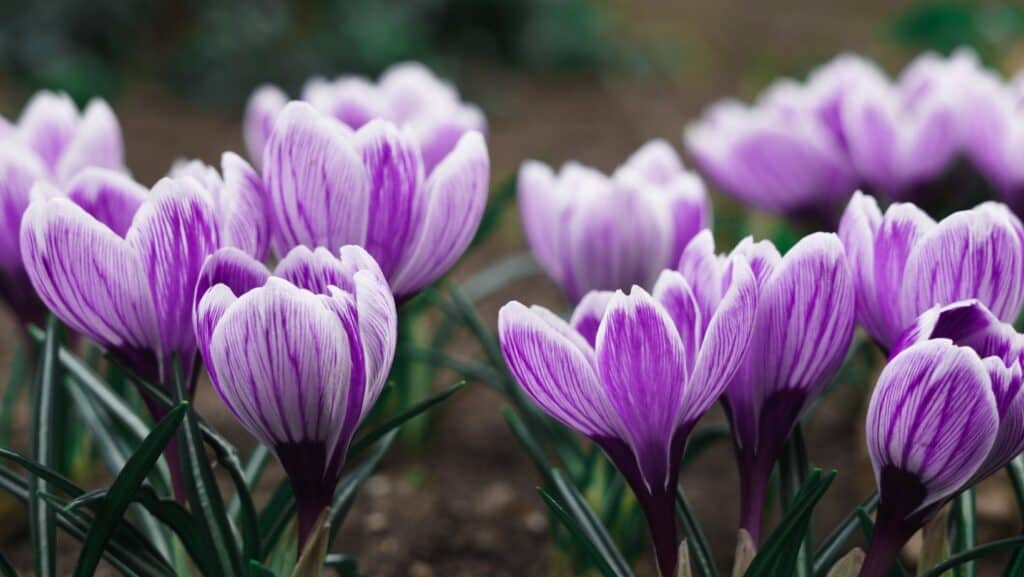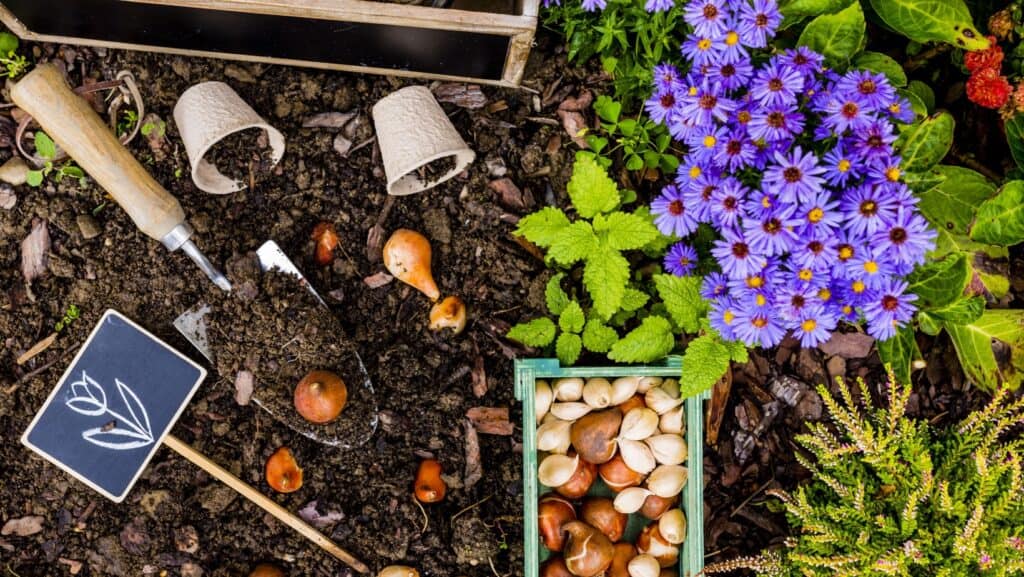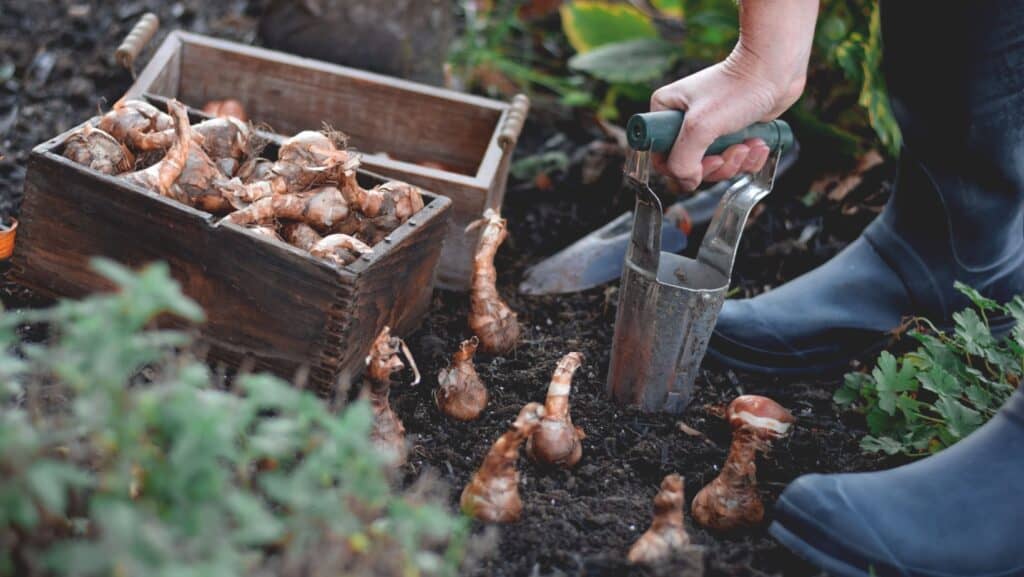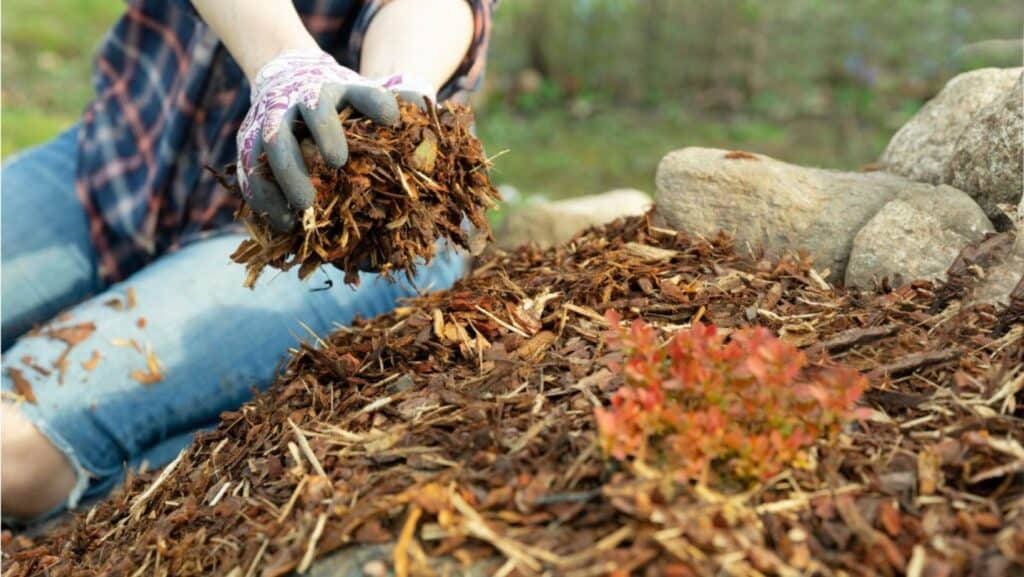Want Gorgeous Spring Flowers? Here’s How to Plant Fall Bulbs Like a Pro!
As the weather cools and the leaves begin to change, it’s time to start thinking about planting fall bulbs. This simple gardening task can yield beautiful blooms come spring, and knowing how to do it properly will help ensure success. In this article, we will cover everything you need to know about planting fall bulbs, from choosing the right bulbs to preparing your soil and understanding the timing.
What Are Fall Bulbs?

Fall bulbs are flower bulbs planted in the autumn, which remain dormant through the winter and bloom in the spring. These include popular varieties such as tulips, daffodils, crocuses, and hyacinths. These bulbs need the cold winter months to undergo a process called vernalization, where exposure to low temperatures triggers flowering.
Why Plant in the Fall?

Fall is the perfect time to plant bulbs because the cool temperatures of autumn allow the bulbs to establish strong root systems before winter sets in. As they lie dormant underground through the colder months, they are preparing for a vibrant display of color when spring arrives.
Choosing the Right Bulbs

When selecting bulbs, it’s important to choose healthy, high-quality ones to ensure optimal growth. Here are some tips for picking the best bulbs:
- Firmness: Choose bulbs that are firm to the touch, not soft or squishy.
- Size: Larger bulbs generally produce stronger plants and bigger flowers.
- Free of Defects: Avoid bulbs with visible cuts, bruises, or mold.
- Variety: Research the types of flowers you want in your garden. Consider mixing early, mid, and late-blooming varieties to extend the spring blooming period.
Some Popular Fall-Planted Bulbs

- Tulips: Available in a wide range of colors and varieties, tulips are a springtime favorite.
- Daffodils: Bright and cheerful, daffodils are deer-resistant and easy to grow.
- Crocuses: These small flowers are among the first to bloom in early spring.
- Hyacinths: Known for their dense, fragrant flower spikes, hyacinths add a burst of color and scent to your garden.
When to Plant Fall Bulbs

Timing is crucial when it comes to planting fall bulbs. In general, bulbs should be planted when the soil has cooled but before it freezes. This usually falls between mid-September and late November, depending on your climate. A good rule of thumb is to plant bulbs about six weeks before the first hard frost is expected in your area. In colder regions, aim to plant earlier in the fall, while in warmer regions, you may wait until November or December.
Preparing the Soil

Well-prepared soil is key to healthy bulb growth. Here are steps to follow for optimal soil preparation:
- Location: Choose a spot that gets plenty of sunlight. Most bulbs prefer at least six hours of direct sunlight per day.
- Drainage: Bulbs need well-drained soil. If the soil is too soggy, bulbs may rot. If you have heavy clay soil, consider amending it with organic matter such as compost, or plant your bulbs in raised beds or pots.
- Soil Amendment: Add compost or a balanced, slow-release fertilizer to your soil before planting. This will provide essential nutrients to the bulbs as they grow.
- Loosening the Soil: Loosen the soil to a depth of at least 8 to 12 inches to allow the bulbs to take root easily.
How to Plant Fall Bulbs

Planting bulbs is a straightforward process, but there are a few important steps to follow:
- Depth: Plant bulbs at a depth that is three times the height of the bulb. For example, if a bulb is two inches tall, plant it six inches deep. This rule helps protect bulbs from cold temperatures and ensures proper growth.
- Spacing: Space bulbs about two to three times their width apart. If you want a naturalized look, scatter the bulbs and plant them where they land rather than placing them in straight rows.
- Plant Pointy Side Up: Most bulbs have a pointed end, which should face upward when planted. This is where the shoot will emerge. If you’re unsure, plant the bulb on its side—nature will usually find a way!
- Watering: After planting, water the bulbs well to help them establish roots. However, avoid overwatering, as this can lead to rot.
- Mulch: Adding a layer of mulch over the planting area will help insulate the soil and retain moisture. Mulch can also prevent weeds from growing.
Caring for Your Bulbs Through Winter

Once your bulbs are in the ground, there isn’t much care required during the winter months. The bulbs will remain dormant until they start to sprout in the spring. In areas with harsh winters, a thick layer of mulch (such as straw or leaves) can protect the bulbs from freezing temperatures. Just be sure to remove the mulch in early spring so the new shoots can emerge easily.
Dealing with Pests

Bulbs can be attractive to garden pests such as squirrels, mice, and deer. Here are a few strategies to protect your bulbs:
- Physical Barriers: Use chicken wire or bulb cages over the planting area to deter digging animals.
- Repellents: Sprinkle blood meal or cayenne pepper around your garden to keep pests at bay.
- Choosing Pest-Resistant Bulbs: Some bulbs, like daffodils and alliums, are less appealing to animals.
What to Expect in the Spring

As winter gives way to spring, your bulbs will begin to grow, eventually producing shoots and colorful blooms. Depending on the variety you planted, flowers can start appearing as early as February (for crocuses) and continue into late May or June (for alliums and late-blooming tulips). After the blooms fade, allow the foliage to die back naturally, as it feeds the bulbs for the following year.
Tips for Long-Lasting Bulbs

Many bulbs are perennials, meaning they will come back year after year if given the right conditions. To ensure the longevity of your bulbs:
- Leave the Foliage: Don’t cut back the leaves until they turn yellow and wither. The leaves are photosynthesizing and storing energy in the bulb for next year’s growth.
- Fertilize: After flowering, apply a low-nitrogen fertilizer to help the bulbs rebuild strength for the following season.
- Dividing Bulbs: If your bulbs become crowded over time, you can divide them to ensure they continue to thrive. This is usually done every few years, in late summer or early fall.
Conclusion

Planting fall bulbs is an easy and rewarding way to add a burst of color to your garden after a long winter. By selecting healthy bulbs, planting them at the right time, and giving them the care they need, you’ll enjoy a beautiful display of spring flowers year after year. Whether you’re a seasoned gardener or a beginner, following these steps will set you up for success and ensure your bulbs flourish when spring arrives. Happy planting!
7 Steps To Storing Tender Bulbs and Rhizomes Over Winter

Tender bulbs and rhizomes, like dahlias, cannas, and begonias, add vibrant colors and unique textures to gardens during the warm months. However, these plants cannot survive cold winters in most regions, as they are not frost-hardy. To enjoy their beauty year after year, proper storage during the colder months is essential. This guide will walk you through the steps of storing tender bulbs and rhizomes over winter, ensuring they remain healthy and ready for replanting come spring.
READ: 7 Steps To Storing Tender Bulbs and Rhizomes Over Winter
The Most Foolproof Indoor Plants for People Who Struggle to Keep Plants Alive

Bringing greenery into your home can have a transformative effect on your living space, adding life, color, and even improving air quality. However, for many people, keeping houseplants alive can be a daunting challenge. If you’ve ever felt like you have a “black thumb,” you’re not alone. Fortunately, there are several indoor plants that are incredibly resilient and low-maintenance, making them perfect for those who have struggled with plant care in the past. This article will explore the most foolproof indoor plants that can thrive even with minimal attention, ensuring that everyone can enjoy the benefits of houseplants, regardless of their gardening experience.
READ: The Most Foolproof Indoor Plants for People Who Struggle to Keep Plants Alive
Plan a Trip to the Top Botanical Gardens in the U.S.! An Unforgettable Journey Through America’s Finest Flora

Visiting botanical gardens is a delightful way to immerse yourself in the beauty of nature, learn about diverse plant species, and find peace in meticulously designed landscapes. The United States boasts some of the most impressive botanical gardens, each offering unique experiences and horticultural wonders. In this guide, we will explore the best botanical gardens across the country, highlighting their distinctive features and must-see attractions.
Join Us

Join us on this empowering journey as we explore, celebrate, and elevate “her story.” The Queen Zone is not just a platform; it’s a community where women from all walks of life can come together, share their experiences, and inspire one another. Welcome to a space where the female experience takes center stage. Sign up for our newsletter so you don’t miss a thing, Queen!







